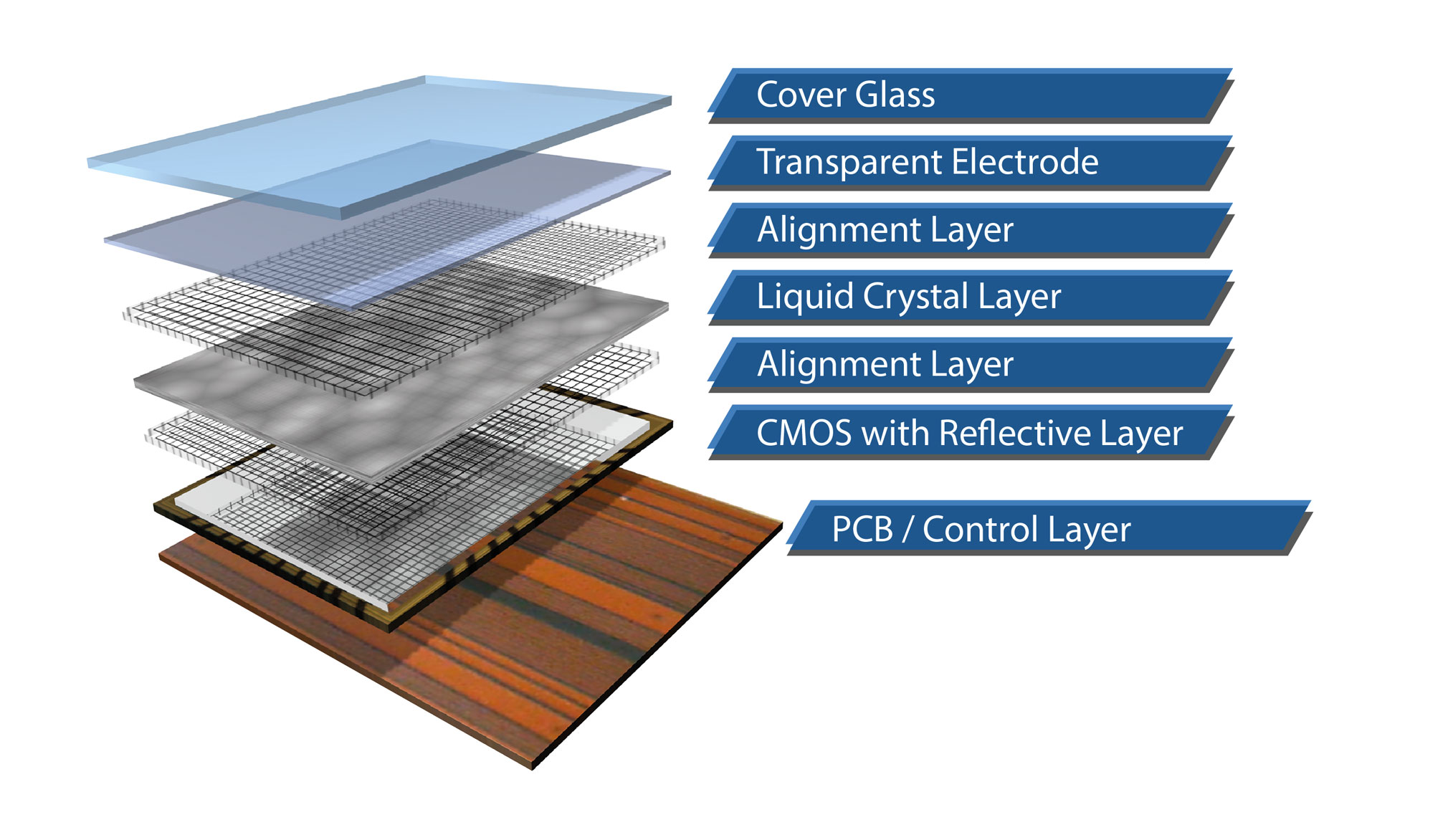全站搜索
Search the entire website
Search the entire website
Press Release / November 21, 2024
Researchers from the Fraunhofer Institute for Photonic Microsystems IPMS, in collaboration with HOLOEYE Photonics AG, have developed a compact LCOS microdisplay with high refresh rates that enables improved optical modulation. This innovative microdisplay will be presented for the first time at the 31st International Display Workshops (IDW) 2024 in Sapporo, Japan.


LCOS microdisplays are characterized by their low power consumption, small size, and lightweight design. They are used in switchable adaptive optics, particularly as phase modulators, and as projection displays in augmented or virtual reality (AR/VR). Phase modulators, also known as spatial light modulators (SLMs), are used in biological imaging and microscopy, among other applications, for wavefront correction and beam shaping. The goal is to improve image resolution, minimize distortions caused by biological tissue, or protect samples. The new LCOS microdisplay from HOLOEYE and Fraunhofer IPMS utilizes an innovative CMOS backplane that enables high-speed light modulation.
Matthias Verworn from HOLOEYE explains: “With the new backplane generation from IPMS, we can realize compact micro-SLMs and specifically address applications with requirements for a small form factor. The very small pixel size enables larger diffraction angles, while the fast interface supports high clock rates and flexible, application-specific display addressing options.”
The unique features of the new LCOS microdisplay open new possibilities in wearable holographic AR systems, in optogenetics, e.g. for structured photostimulation of neurons, as well as in quantum optics and quantum computing.
Philipp Wartenberg, Head of IC and System Design at Fraunhofer IPMS, states: “The newly developed backplane architecture of our compact LCOS microdisplay significantly expands the possibilities for light modulation and far exceeds existing refresh rates. This is enabled by the integration of a complete framebuffer and a high-speed interface to the pixel matrix, achieving a data transfer rate of up to 576 Gbit/s to a pixel array with a resolution of 1440 x 1080 pixels and a pixel size of 2.5 µm.” HOLOEYE plans to launch the first products with this LCOS light modulator
Star Photonics® offers software, consultation and services for optical and electro-optical devices in the chip level. We specialize in Integrated Optics and Microelectronics for Silicon Photonics platform. The company has proven exp...
查看全文荷兰ISTEQ 等离子体光源|白光光源|宽带光源|激光泵浦光源 荷兰ISTEQ的XWS系列激光泵浦等离子体宽带光源是一款高亮度、高稳定、长寿命的宽谱 光源,采用激光器输入连续的泵浦激光来激发等离子体放电发光,从而产生高度稳定的白光。输出白光的光谱范围很宽,谱线...
查看全文意大利Dynamic Optics相关问题 1、意大利Dynamic Optics公司的变形透镜是否区分光路方向? 答:变形透镜的主要结构是双层玻璃,中间填充大折射率的液体介质。透镜的光路方向没有区分,双向都可以透光。 2、意大利Dynamic Optics公司的透镜式变形镜能校正几阶...
查看全文空间光调制器(Spatial Light Modulator,SLM)是一种对光波的空间分布进行调制的器件,在现代光学领域具有重要作用。 基于液晶的调制:液晶分子的排列可由外部电场控制。改变施加在液晶单元上的电压,分子排列改变,进而影响液晶层光学性质,实现对光波相位或...
查看全文